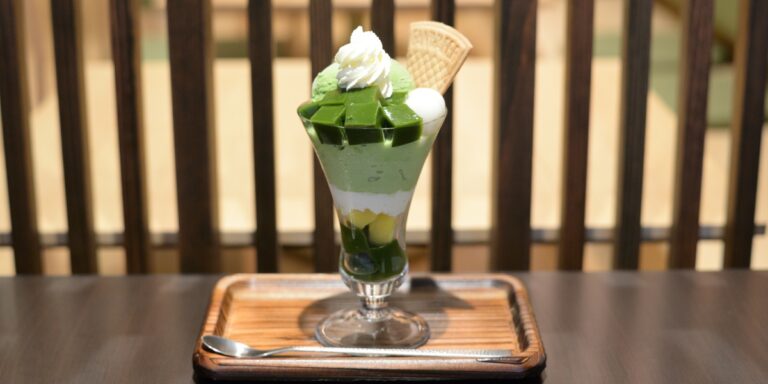
Ryoan-ji Temple in Ukyo-ku, Kyoto, where its beautiful rock garden is famous worldwide. The ancient temple, which was listed as a UNESCO World Heritage Site in 1994, is one of the temples you want to visit for sightseeing in Kyoto. Check the highlights and accesses of the precincts, including the rock garden, in advance.
Once an aristocratic villa! History of Ryoan-ji Temple through the war
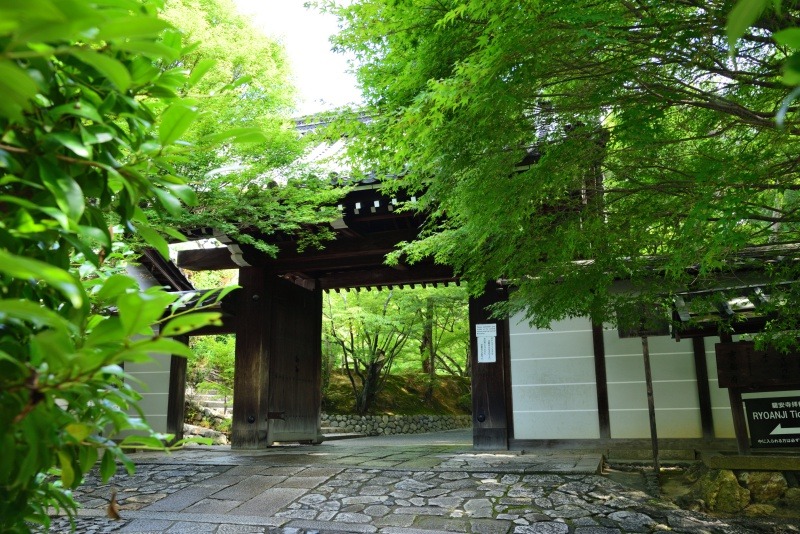
Ryoan-ji Temple established a villa in 1450 that was granted by Katsumoto Hosokawa, who had served as the administration of the Ashikaga General Family (an important post assisting the general), from the Tokudaiji family of the court nobility. It was founded by Zen Master Giten Gensho, the fifth patriarch of Myoshin-ji Temple.
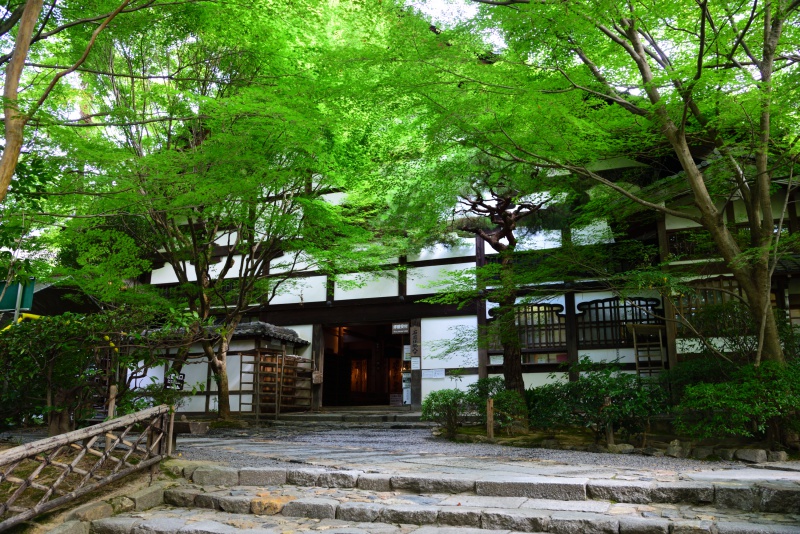
However, the temple was burned down in the Onin War, which was contested by Katsumoto Hosokawa and Sozen Yamana. In 1488, Katsumoto's child, Masamoto, rebuilt it, and in 1499, Hōjō was established. The rock garden is also said to have been landscaped at this time.
Ryoan-ji Rock Garden loved by Toyotomi Hideyoshi, Queen Elizabeth and Steve Jobs
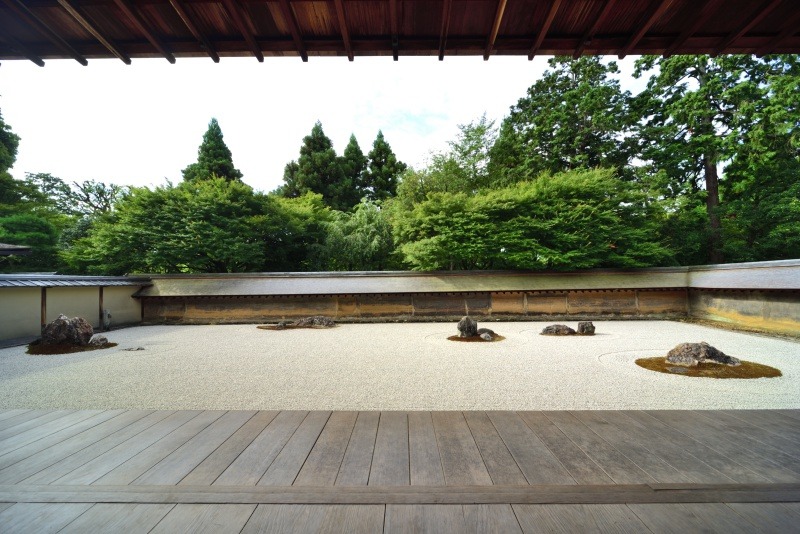
Ryoan-ji Temple's proud rock garden is located on the south side of Hōjō; it is arranged in a rectangular white-sand garden 25m east-west and about 10m north-south, with 15 stones divided into 5 · 2 · 3 · 3.
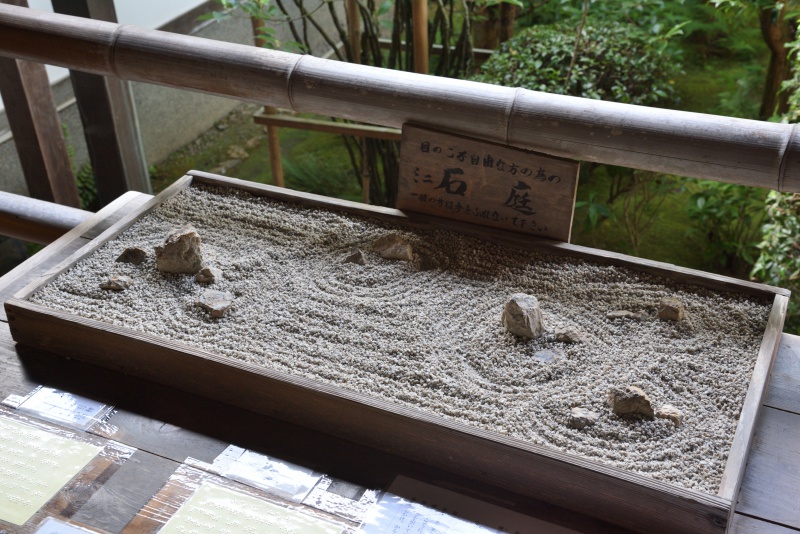
In the old days, it was often visited by Oda Nobunaga and Toyotomi Hideyoshi, and in recent years it has become widely known abroad as Queen Elizabeth and Steve Jobs, the founder of Apple.
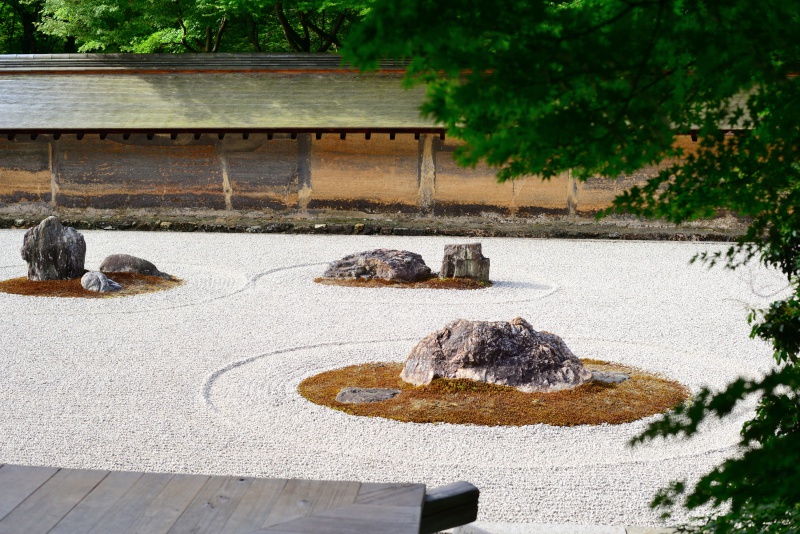
The rock garden is also known as the "Tiger crossing the stream garden" and "Shichi-go-san garden", and the stone arrangement is composed of islands and high peaks floating in the ocean and the cloud sea, the stone arrangement of the shape of "heart", the symbol of the Five Mountains of China and the Five Mountains of Zen, etc. So far many have tried various interpretations, the truth of which remains a mystery.
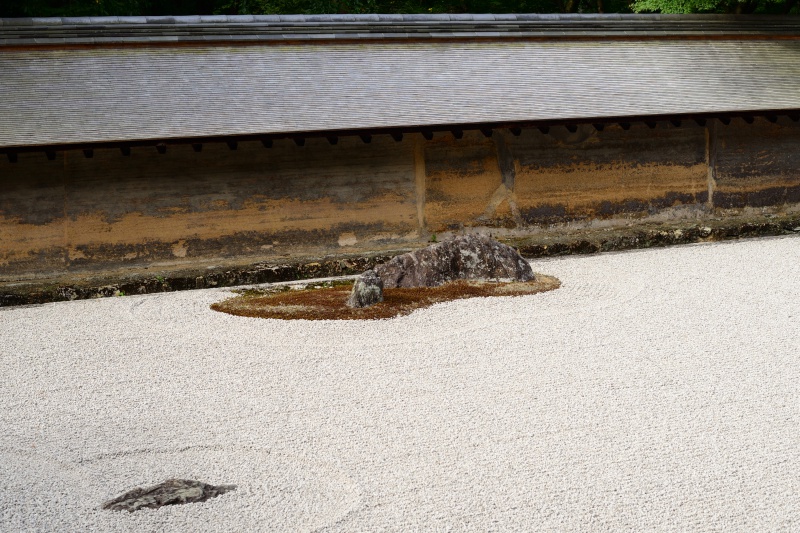
To begin with, it is still unknown who created the garden, and many names have been suggested, including the temple's founder, Zen Master Giten Gensho, Hosokawa Katsumoto, who was involved in the garden's construction, his son Masamoto, Soami, who excelled in painting and garden design, and Kanamori Sowa, a tea master active in the early Edo period.
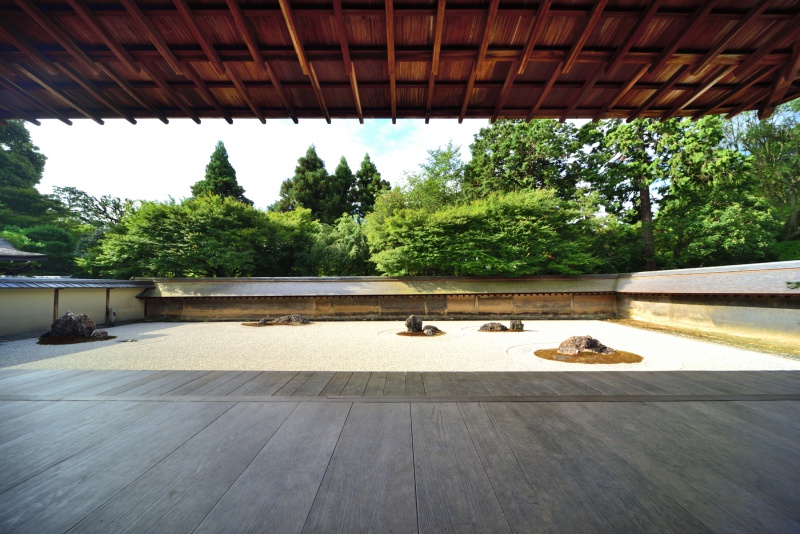
There are other mysteries in this rock garden, one of which is the skillful perspective method. It is a rock garden that seems horizontal at first glance, but is designed to take into account drainage by lowering it to the back left as seen from the Hōjō.
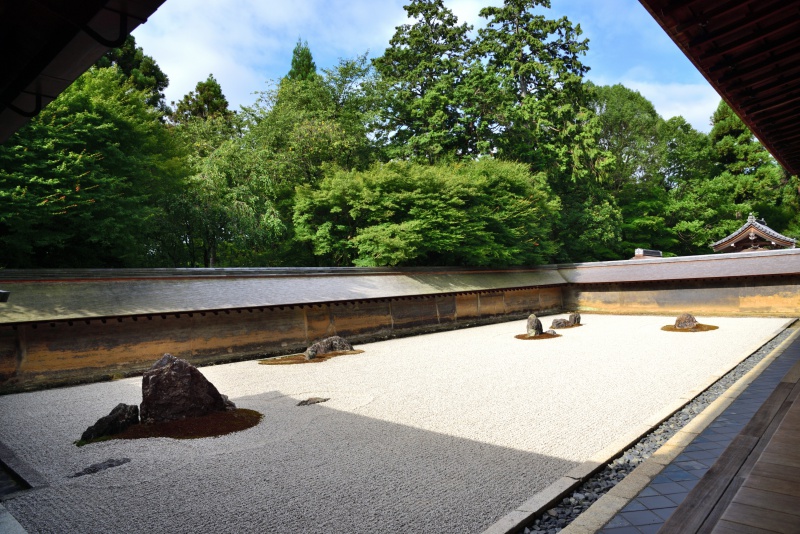
In addition, the western wall on the right as seen from the Hōjō is made to be low from the front to the back, and in order to visually feel the depth, the height of the earthen wall is calculated and the perspective method is utilized, it is an advanced technique that is rare at that time.
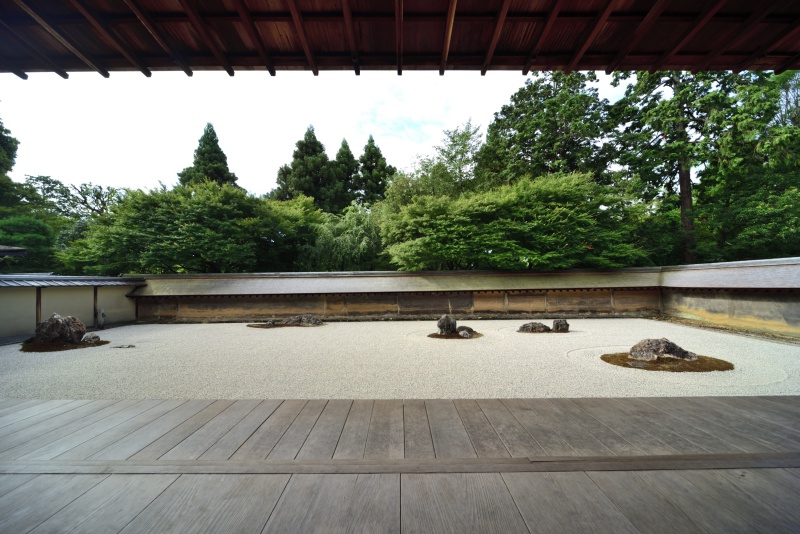
The earthen wall surrounding the rock garden is called "oil-earth wall" because it is made of soil mixed with rapeseed oil and kneaded together, and is finished in a structure that can withstand light-back from white sand, long snow and environmental changes. The precious presence, which highlights the rock garden of the Ryoan-ji temple like a frame surrounding a painting, has become a new figure after the replanting in 2022.
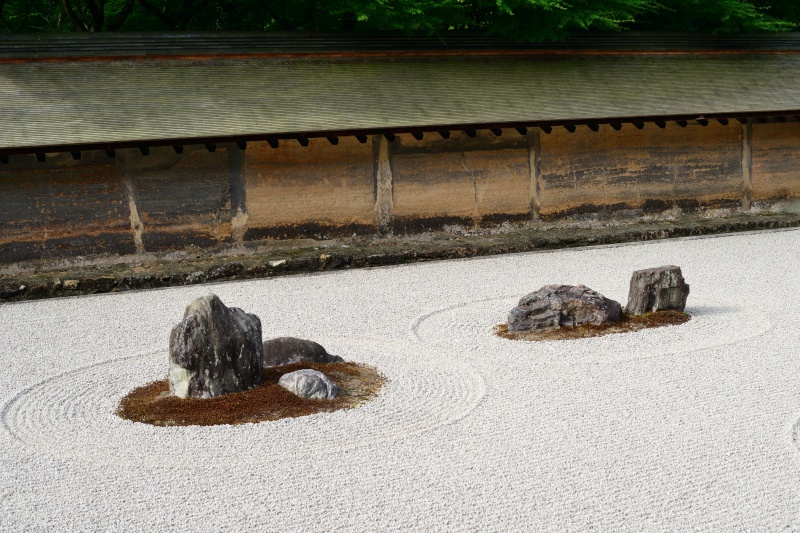
And the number of 15 stones arranged in the garden is also said to be meaningful. In the East, the number 15 means "perfection." man is never perfect, so you can not see through all of the fifteen stones. There is a theory that it expresses such a connotation. However, there are other theories, and the truth is uncertain.
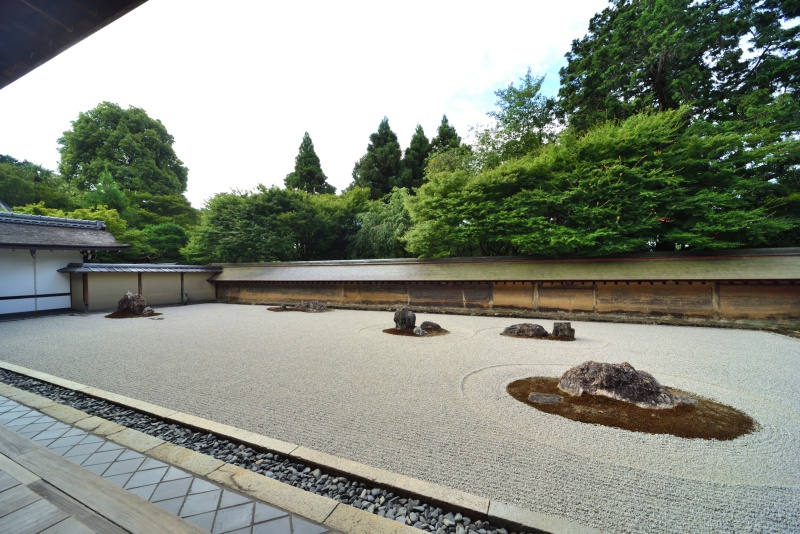
The rock garden, shrouded in mystery and wonder, continues to attract many. In spring, it shows beautiful harmony with the weeping cherry blossoms, and it is as if you are looking at a painting. If possible, I would like to visit first thing in the morning and look at it quietly. The time to rest will surely be a deep memory even during a trip to Kyoto.
You should also check out the autumn leaves tunnel at the squat of contentment and Kyoyochi Pond!
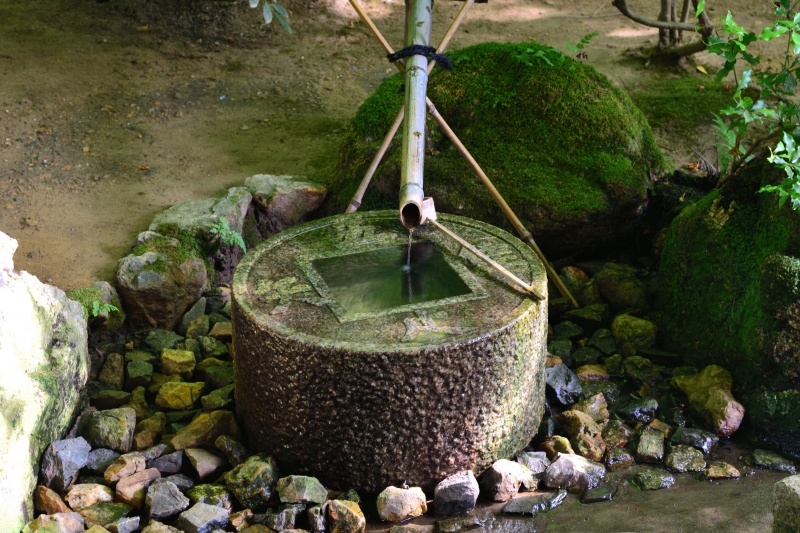
Ryoan-ji Temple is famous for its rock garden, but there are many other highlights, so let's hold it down by all means.
On the north side of Hōjō, there is a "the squat of contentment", which is said to have been prodded by Tokugawa Mitsukuni (Mito Kōmon). The squatting was used to cleanse the hands and mouth before entering the tea room. The central water hole is seen as a "mouth", and when it is combined with "Five" "Fallen Eagle" "Hound" "Arrow" written around it, it can be read as" Waretadatarukotowoshiru (I think that's what I did) ".
This was preached by the Buddha who opened Buddhism, saying, "Those who are contentment (knowing your own place and not asking for more) are who is poor is rich, but he who does not know enough is poor even though he is rich. A design of the "spirit of contentment". The "Tsukubai", which represents the essence of Buddhism and is also connected to the spirit of the tea ceremony, is definitely something you should see.
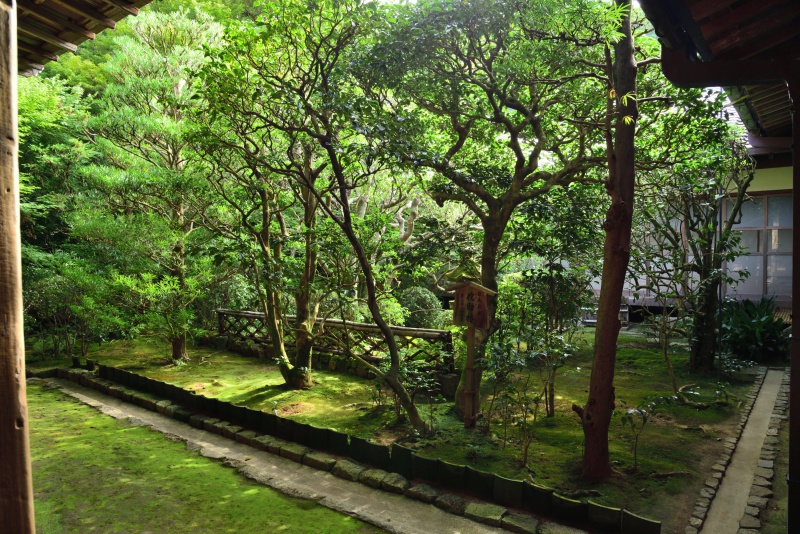
In the East Garden of Hōjō, The Wabisuke camellia, named after the man named Wabisuke who is said to have brought it back from Korea during the Momoyama period, blooms beautifully from early March to early April. The Wabisuke camellia, who can feel the world of wabi-sabi, is also famous for being loved by famous tea people such as Sennorikyu. This Wabisuke camellia is said to be the oldest in Japan, and it is said that Toyotomi Hideyoshi loved the single-flowered flower with white mottes on a peach-red ground.

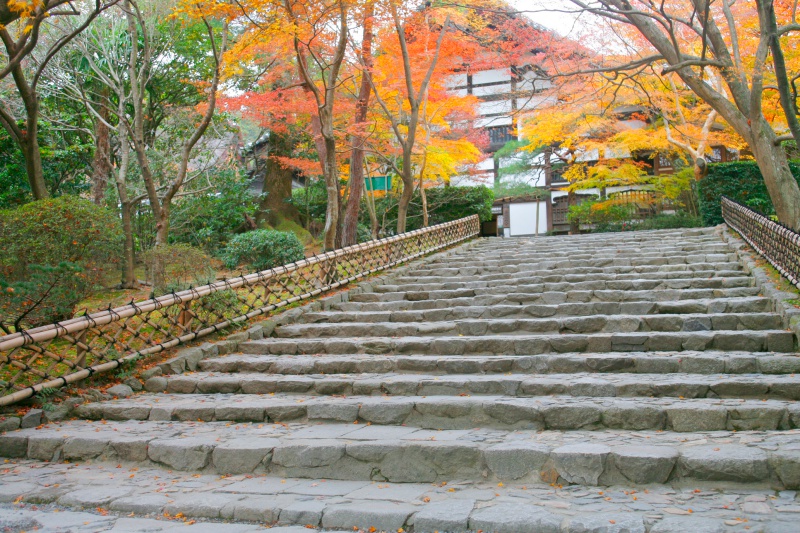
The approach to the Hōjō is a tunnel of maple trees, and you can enjoy the refreshing green of the leaves from late spring to early summer, and the vibrant red of the leaves in autumn. The bamboo fence beside the stone steps is called "Ryoan-ji fence" and is characterized by its diagonally arranged bamboo. As one of the many types of bamboo fences, Ryoan-ji fence are installed in Japanese gardens and home front yards all over the country.
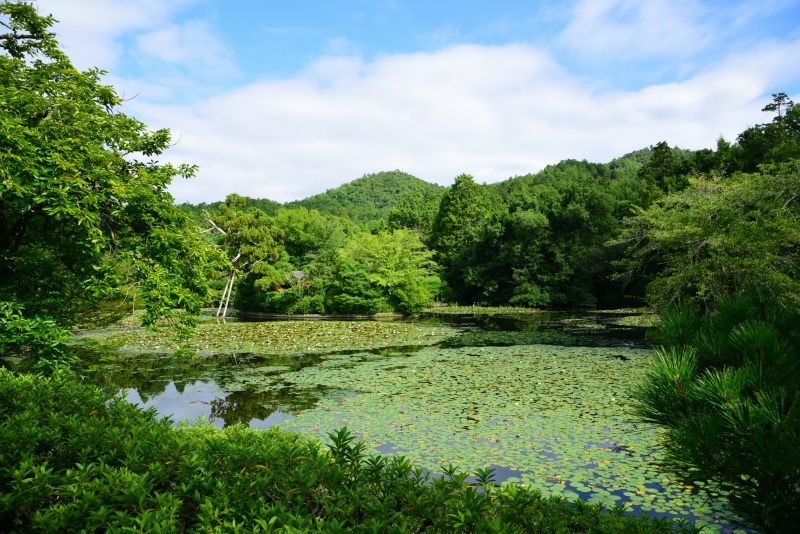
The large Kyoyochi Pond, which occupies roughly the southern half of the Ryoan-ji temple grounds, has records of aristocrats enjoying boat rides and poetry and musical recitals when the temple was still a villa. Known as a popular spot for mandarin ducks, the beautiful pond is still a popular spot for herons and ducks to rest their wings, and visitors can enjoy the changing seasonal flowers, including water lilies in the summer.
What is the access to Ryoan-ji Temple?

To get to Ryoan-ji Temple from Kyoto Station, we recommend taking the bus. Take city bus number 50, get off at the "Ritsumeikan Daigaku-mae" bus stop, and walk along Kinukake-no-michi for about 7 minutes to reach Ryoan-ji Temple. If you are heading to Kyoto by private railway, take city bus number 52 or 55 from Hankyu Omiya Station, which is a 7-minute walk from the "Ritsumeikan Daigaku-mae" bus stop, or from Keihan Sanjo Station, take bus number 59 and it is a short walk from there.
If you are coming from the Arashiyama area, take the popular Arashiyama Electric Railway, known for its retro atmosphere. Transfer to the Kitano Line at Katabiranotsuji Station and get off at Ryoanji Station. From there, it is a 7-minute walk to the temple.
■ Ryoan-ji Temple
Address: 13 Ryoanji Goryoshitacho, Ukyo Ward, Kyoto City
TEL:075-463-2216
Admission time: 8 to 17 o'clock (from December 1 to the last day of February, 8:30 to 16:30)
Admission fee: 600 yen for adults, 500 yen for high school students, 300 yen for elementary and junior high school students
Parking: 80 cars (free for 1 hour when viewing the rock garden)
- This article is created based on the contents of "Rurubu Information Edition" or "Rurubu & more." "Rurubu +".
- The data listed are as of March 2025. Prices, business hours, regular holidays, menus, etc. may change or may not be available due to temporary holidays. Please check in advance when using it, as the content may change.
- The holiday of stores and facilities omits the year-end holiday, Obon holiday, Golden Week, and temporary holidays in principle.
- The published fees are in principle the fee including consumption tax that we have confirmed at the time of the interview, and the entrance fee is the adult fee if there is no special mention.
- In principle, the published times are open (hall) to closed (hall). Please note that the last order or entrance (hall) time is 30 minutes to 1 hour before the normal closing (hall) time. The last order is denoted LO.
- For the spring quality and efficacy of the hot springs listed, manuscripts are prepared based on answers from each facility.

